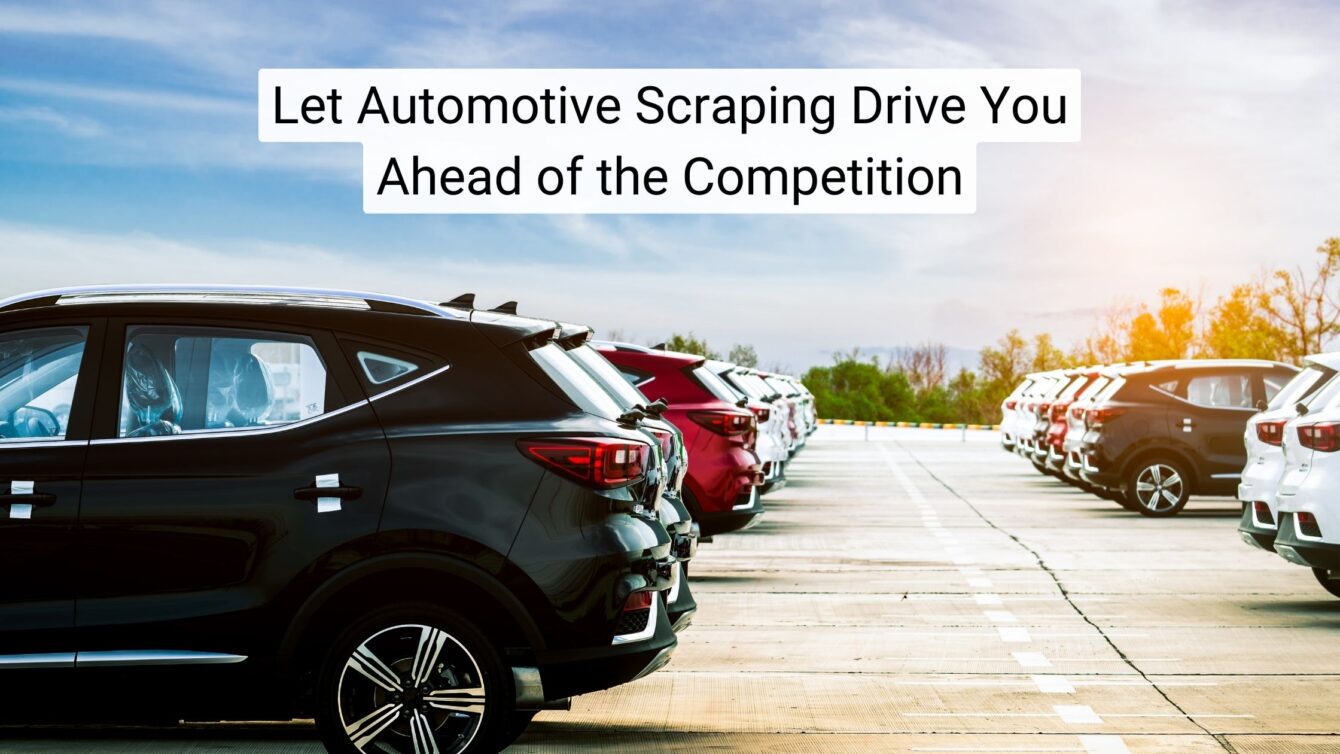
What Is Automotive Data Scraping?
Much has been written about the competitiveness of today’s car market. It doesn’t matter how consumers are looking to buy – new or used – there just aren’t that many vehicles in dealership lots.
What does this mean for dealers and advertisers? You’re vying for the attention of hungry customers who regularly use digital tools to find the best deals.
If you’re a dealership and price your vehicles too high, customers might lose interest. Too low, and you might lose revenue. If you’re an advertiser and don’t quickly post listings with updated information, you could lose to competitors that listed the same dealer’s vehicles faster.
Fortunately, automotive data scraping can solve these issues while enhancing both your advertising site and your business strategy. Here’s what automotive data scraping is and how you can stand out from the pack by leveraging it.
How Automotive Data Scraping Works
To understand how automotive data scraping works, it’s best to first answer the question: What is data scraping?
Data scraping (also called web scraping) extracts data from one place for use elsewhere. One example: pulling jobs data from a careers page and adding it to a job board.
After extracting this data, a web scraping firm (like us!) will clean, update, and format the data in the delivery format their customers prefer (XML, JSON, etc.). From there, a customer can either add that structured data to their advertising site or use it to fuel business intelligence.
Automotive data scraping is a specific form of web scraping that extracts all relevant automotive data from a dealership’s site for future use. And there is plenty of this data to collect. Here are fields we frequently encounter when scraping automotive data:
- Model
- VIN
- Manufacturer
- Year
- City
- State
- Price
- Fuel type (EV, hybrid, or ICE vehicle)
- Mileage
- Transmission
- Interior / Exterior color and material
- Reviews
It might seem like a lot of information, but if you’ve ever bought a car, you understand why consumers need it and the value it brings to the buying journey.
Automotive Data Scraping: Accurate and Affordable Data When You Need It
There are two key groups that can benefit from automotive data scrapes.
The first is automobile advertisers. They can use automotive data scraping to quickly – and continuously – populate their sites with live, updated dealer inventory data. What does this clean data look like on an advertiser’s site?
- Listings with information in all the correct fields (e.g., users won’t see an automobile’s mileage in the manufacturer field).
- Live links to cars that haven’t been purchased or removed from the dealership site. This limits the chances of users experiencing 404 errors (and the resulting loss of revenue).
When advertisers need this data, they have two ways of getting it: from a dealership’s dealer management system (DMS) or from web scraping. Automotive data scraping is generally the more affordable and more reliable option.
When advertisers go through the DMS to get dealer inventory data, they’re charged a premium for access to DMS feeds – sometimes five times more than they’d pay for automotive data scraping.
But when advertisers work with a web scraping firm, they avoid paying high prices and they get clean data in the delivery format they want.
The second group is dealerships and manufacturers. They can use automotive data scraping to identify market trends, like price changes and the supply of automobiles nationwide. A dealer will want to know what their competitors are charging and which models are flying off the lot.
Automotive data also helps dealerships and manufacturers monitor consumer purchasing behavior. How much are consumers willing to spend? What are they prioritizing in a car? The takeaways can inform everything from which existing models manufacturers should push out more to which features they should include in future models.
How to Power Your Site with Top-Quality Automotive Web Scrapes
As with many things, the decision here is to build or buy.
Configuring and monitoring web scrapes yourself often means hiring a team of developers to initiate and monitor the scrapes every day.
These developers will also do the work of formatting and cleaning the resulting data before adding it to your site or delivering it to key stakeholders in your business. That doesn’t just take a lot of time; it’s also expensive. The average salary for a software developer is $80,437.
But by outsourcing your automotive data scraping to a professional firm, you can get automotive scrapes cheaper, faster, and with updated data in whatever format you want – without lifting a finger.
In a Competitive Car Market, Automotive Data Scraping Is Your Edge
Though the supply of certain semiconductor chips appears to be growing, the car market will likely remain tight for some time. And in hot markets, the dealers and advertisers with the best data tend to win.
In other words, the best time to invest in your data was yesterday. The second best time is now. Yes, automotive data scraping can give you an edge over your competition, but if the supply chain doesn’t ramp up soon, investing in this scraping could be the baseline for keeping pace with your competitors.
We can help. Whether you need feeds shared via XML, API, or delivered to your FTP server, we’ve got you covered. Not to mention, we also help to prepare custom feeds optimized for Facebook automotive inventory ads, Google car inventory ads, Snapchat automotive ads, and more.
For information on how automotive data scraping can elevate your dealership or advertising site above the others, reach out. We even offer month-long free trials of our services.